Search Results

Chloe
At the age of 13, I became the youngest stem cell donor at Johns Hopkins Hospital. At 15, I am a Student Visionary of the Year in the 2024 Leukemia and Lymphoma Society (LLS) campaign. LLS has become an integral part of my life over the past two years. In the spring of 2022, the peaceful life of our family was shattered by my mom’s diagnosis of acute myeloid leukemia (AML). Learning that a stem cell transplant was the only cure, I volunteered to donate my bone marrow to her.
School
This page includes information about:
Treatment
It's important that your doctor is experienced in treating patients with chronic myeloid leukemia (CML) or has access to a CML specialist. Doctors who specialize in treating patients with CML are called “hematologist-oncologists.”
Types of CML TreatmentClick the links below to read about types of treatment for CML.
Biosimilars
Many drugs developed are called biological products (known as biologics, also known as the reference product) because they are produced through biotechnology and use living systems, such as a microorganism or a plant cell. Monoclonal antibodies and vaccines are some examples of biological products. Because the makeup of biologics are very complex, it is hard to create imitations of the drug. Some drug development is simple, like following a recipe with standard ingredients.
Diarrhea and Constipation
Diarrhea and constipation are common side effects of cancer treatment. The severity of diarrhea or constipation varies among patients and depends on the type of treatment you receive. Sometimes side effects improve as you adjust to treatment. Most side effects go away when treatment ends.
Tell your healthcare team if you are experiencing new or worsening diarrhea or constipation. Do not take over-the-counter medications without talking to your doctor.
DiarrheaFollow these tips to manage diarrhea:
Brent
My nephew Brent Terence was a perfectly healthy 17-year-old young man, active in school, up-to-date on his routine check-ups, and had normal labs. But until the end of July 2022, Terence showed signs of extreme fatigue, confusion, loss of memory, hallucination, and an inability to keep his eyes open and walk straight. So his parents, Brenda and Tristan, decided to take him to the ER. Multiple blood tests and X-rays were done, but they couldn’t figure it out.
NHL Subtypes
More than 60 specific NHL subtypes have been identified and assigned names by the World Health Organization (WHO). NHL subtypes are categorized by the characteristics of the lymphoma cells, including their appearance, the presence of proteins on the surface of the cells and their genetic features. It's important to know your subtype since it plays a large part in determining the type of treatment you'll receive. A hematopathologist, a doctor who specializes in the diagnosis of blood disorders and blood cancers, should review your biopsy specimens.
Graft-Versus-Host Disease
Graft-versus-host disease (GVHD) is a potentially serious complication of allogeneic stem cell transplantation and reduced-intensity allogeneic stem cell transplantation. In this treatment, a patient’s own damaged or diseased blood-forming stem cells are destroyed. Then they are replaced with healthy stem cells from a donor.
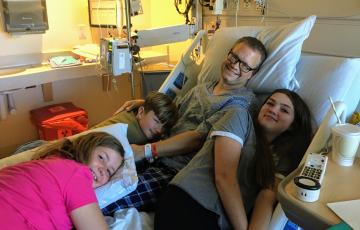
Lori
When my husband Ken was first diagnosed and treated for AML it felt like we were trapped in a fierce storm and being tossed about in a fury of wind. My husband Ken was diagnosed with AML (acute myeloid leukemia) and received intense treatment, spending a total of 120 days in the hospital in 2019, culminating in a bone marrow transplant (BMT). We are so grateful that his only sibling was a viable match as many patients struggle for years searching for a donor.

Ariana
In the blink of an eye, our lives can crumble underneath us like a tsunami drowning the life out of a city. Many of us unknowingly stand on the edge of an eroding cliff and one slip away from relinquishing our most desired aspirations. At 19 years old, I stood inches away from the edge of that cliff when I was diagnosed with essential thrombocythemia (ET). This was one of the most defining moments in my life that propelled me into a tenacious desire to become a physician capable of fully understanding the fragility of life.
Questions & Answers
What is the health insurance marketplace, and how do I know if I am eligible for coverage?The health insurance marketplace – sometimes referred to as the health insurance exchange – is where consumers can purchase health insurance plans that comply with the patient protections in the Affordable Care Act.
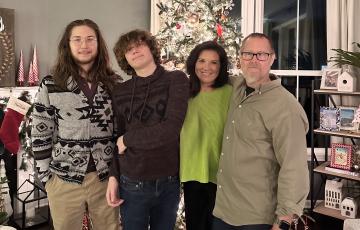
John William
I was diagnosed with acute myeloid leukemia (AML) in December 2019. After three days of chemo, which was discontinued due to bleeding in my lungs, I spent three weeks in the hospital finding out I had a life-threatening, invasive fungal sinusitis that they could not treat with medications or surgery. The doctors sent me home to hospice. They had shot me up with white blood count (WBC) stimulators to give me as much time as they could. I wanted to get through Christmas and my youngest's birthday which was on the 29th. They gave me three days to four weeks at most.
Therapy Acceleration Program - Portfolio
Since 2017, three TAP-supported therapies have been approved by the U.S.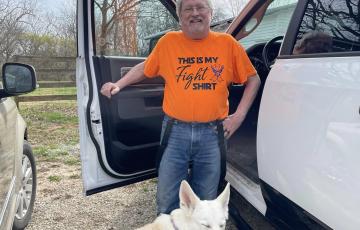
Patrick
It was November 2023. The doctor looked at me and said, “Mr. Reese, I’m terribly sorry to have to tell you this, but the leukemia has relapsed again. Combined with the graft-versus-host disease (GVHD) that is currently raging, we no longer have options for treatment. Our suggestion is that you start comfort care through hospice.”

Amy
In December 2015, our son, William, started complaining of leg/knee pain. William had always been an active boy, so we figured that he must have just hurt himself doing something physical. After a few days of the pain continuing, my husband thought that maybe it was “growing pains.” We continued to keep an eye on it but weren’t too concerned at this point. By the end of the week, I called our pediatrician for an appointment. William had an exam and bloodwork done. He was also given antibiotics.

Paul
Thank you on behalf of the Freeman Wilner Family for this Honored Hero Award in memory of my father, Dr. Freeman Wilner, he was a hero to many.
Tyrosine Kinase Inhibitor (TKI) Therapy
Tyrosine kinase inhibitors (TKIs) are a type of targeted therapy. TKIs come as pills, taken orally. A targeted therapy identifies and attacks specific types of cancer cells while causing less damage to normal cells. In CML, TKIs target the abnormal BCR::ABL1 protein that causes uncontrolled CML cell growth and block its function, causing the CML cells to die.
The first therapy given for a disease is called “initial” or “first-line” treatment. The following four TKI drugs are approved as first-line treatment for chronic phase CML:

Lisa
It was 2009. Obama had just been sworn in as president, captain Sully successfully landed United Airlines flight 1549 on the Hudson River during an aircraft malfunction, and all souls on board survived.
Delena
I was diagnosed with acute lymphocytic leukemia (ALL) at the age of two in 1981. I was sent to Riley Hospital for Children for assessment and to create a treatment plan. At the time of my diagnosis, my mom was a single mother of two young daughters. My father passed away from Ewing sarcoma in April 1979. I was eight months old, and my sister was four when he passed.

Monica
I am currently 23 years of age and I’m from South Africa. This is my story of my journey with Hodgkin lymphoma. This is a story of hope, a story of victory and a story meant to inspire those affected to keep holding on. Towards late October of 2019, I noticed a bump protruding on my chest. It was a very hard and rigid bump which didn’t move. I was still in university completing my post-graduate diploma in accounting, so I didn’t think too much about it, my main stress was to complete my degree.
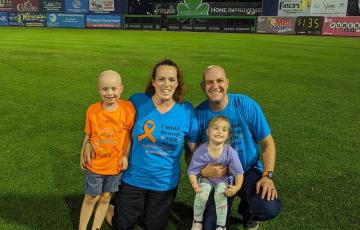
Aiden
On November 6, 2022, God spoke to me and told me to take Aiden to the hospital. He had a lingering cough and random fevers that would come and go over the month. I took my parents to Philly airport and stopped by Nemours in Wilmington. I figured they would run some tests, and I would be told he had some infection. We would get medications and be on our way. When the nurse examined him, she asked about anything else going on. I mentioned he has had a lot of bruising lately, but he does karate and is a typical boy. We looked over his whole body, and I had not realized he had so many bruises!
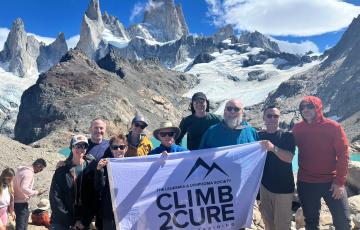
Alice
In March 2023, while visiting my daughter and son-in-law in San Francisco, I saw the Climb2Cure trip to Patagonia listed on The Leukemia & Lymphoma Society's (LLS) website. They have always talked about their backpacking trip to Patagonia in Argentina and Chile as their favorite hiking trip ever. This event would be my 16th LLS fundraising adventure since going into remission from multiple myeloma (MM) in 1999.

Dax
“I just wanted to let you guys know that I’m so supportive of everybody who likes my stuff even though not a lot of people like my stuff – like I’m not huge or anything – I’m pretty small. I just want to show you guys support, and even though I know most of it is just my friends, people I know, who I’ve met, that really helps when you see appreciation for things that you do.”

